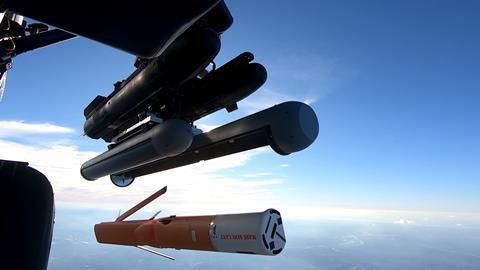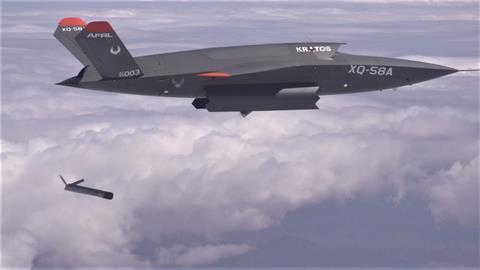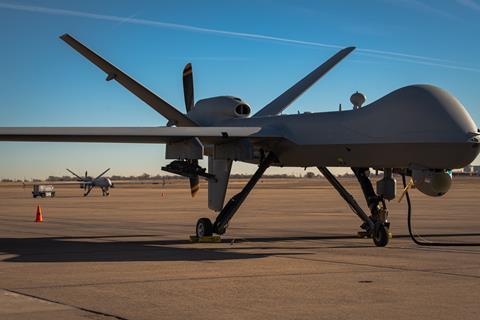Recent demonstrations by US Air Force special operators proved the General Atomics Aeronautical Systems MQ-9A Reaper type is capable of deploying other uncrewed aerial vehicles (UAVs) while in flight.
Air Force Special Operations Command (AFSOC) and General Atomics revealed the accomplishment on 5 February, disclosing a collaboration that tested the capability as part of a new air force strategy for operating in contested environments.
That strategy, known as Adaptive Airborne Enterprise (A2E), is AFSOC’s “number one acquisition priority”, according to the organisation’s commander Lieutenant General Tony Bauernfeind.

The air force says A2E arose from a shift in operational priority away from combating militant terrorist organisations, and instead preparing to fight so-called “near peer” adversaries such as China or Russia.
Part of A2E, according to the air force, is an “evolution” in how the service uses the MQ-9A beyond exclusively for intelligence, surveillance and reconnaissance (ISR) and kinetic strike operations.
As part of the demonstrations, which were held at Cannon AFB in New Mexico, an MQ-9A deployed an Anduril Altius 600 expendable UAV in mid-flight.
Also known as a loitering munition or one-way UAV, the Altius is a small, lightweight vehicle capable of delivering lethal effects or providing ISR support.

Anduril says the Altius family of UAVs are designed to provide “increased capabilities to any mothership”.
With a flight endurance of up to 4h, the expendable system gives pilots or larger UAV operators the option to deploy an Altius for ISR or a kinetic strike, while remaining at a safer stand-off distance.
The Anduril platform can also provide complementary effects, such as electronic warfare support or relaying communications.
The MQ-9A now joins a growing list of aircraft that have launched an Altius UAV.
The Air Force Research Laboratory and Kratos in 2021 deployed an Altius 600 from a Kratos XQ-58 Valkyrie autonomous jet, while the US Army previously test fired a larger Altius 700 from a Sikorsky UH-60 Black Hawk in 2023.
In 2020, General Atomics also successfully deployed an Altius 600 from another of its aircraft – the MQ-1C Gray Eagle.

AFSOC plans to continue expanding the capabilities of its UAVs and operators under the A2E programme.
General Atomics says the latest round of tests saw a single ground crew simultaneously control three separate MQ-9As – another technological milestone.
AFSOC reveals the next round of demonstrations are planned for the summer of 2024. Subsequent tests will see a single operator simultaneously control multiple types of UAVs, from increasingly austere locations.
A major goal of the A2E programme will be turning the MQ-9A platform into a mothership for launching and controlling smaller UAVs.
“As the MQ-9 and its crews acquire the capability to direct [small UAVs] carrying stand-off sensor payloads, crews will be able to control swarms of air vehicles from anywhere,” the command says.
AFSOC plans to acquire three of the latest General Atomics MQ-9B SkyGuardian under the initiative.


























